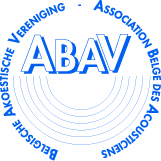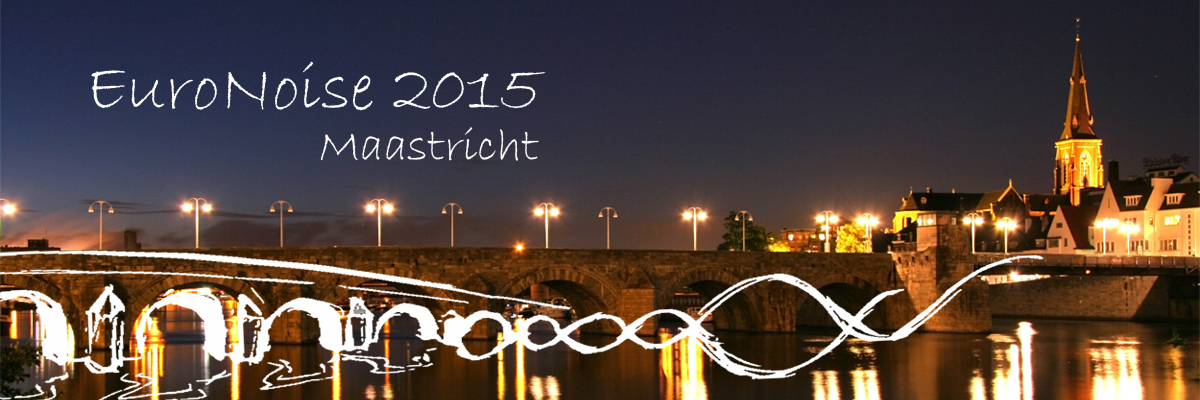Acoustical societies
 |
|
The European Acoustics Association (EAA) is a non-profit entity established in 1992 that includes in its membership the national acoustical associations of the European countries. Currently, the EAA gathers 33 societies of acoustics and serves more than 9000 individual acoustician from all over Europe who are members of their national societies. EAA head office is located in Madrid (Spain).
|
The Objectives of the European Acoustics Association ( https://www.euracoustics.org/) are:
- To promote and spread the science of acoustics, its technologies and applications throughout Europe and the entire world.
- To interface with associations whose activities are related to acoustics, in order to promote development and progress of acoustics in its different aspects and applications.
- To establish contacts, across member associations from each country, with public and private organizations and enterprises, with associations, science institutions, universities, professional organizations, etc.,to assist them in reaching their goals.
- To promote the formation of national acoustical societies in European countries where these do not exist, and to support and strengthen activities of national associations in those countries where they do exist, respecting the principle of subsidiarity.
- To promote acoustic research and application of corresponding technologies. To publish a European journal on acoustics, in printed as well as in electronic format.
- To organize and promote congresses, to publish books and monographs, and to engage in all those activities that are connected with the diffusion, promotion and development of acoustics.
- To establish agreements for collaboration with European and international entities in order to better serve the objectives of EAA.
- To foster the exchange of knowledge, experience and initiatives present in any one of member countries, for a better development of and progress in acoustics.
- To stimulate education activities and platforms in acoustics at all educational levels, both academic and profes- sional.
- To promote and divulge the establishment and implementation of norms and recommendations in the various fields of acoustics, especially in the area of environmental acoustics, for a better quality of life.
Members of EAA are the Acoustical Societies (Associations or Institutes) of the following countries: Austria, Belgium, Bulgaria, Croatia, Czech Republic, Denmark, Finland, Former Yugoslav Republic of Macedonia, France, Germany, Greece, Hungary, Israel, Italy, Iceland, Latvia, Lithuania, Morocco, Netherlands, Norway, Poland, Portugal, Ro- mania, Russia, Serbia and Montenegro, Slovakia, Slovenia, Spain, Sweden, Switzerland, Turkey, Ukraine and United Kingdom.
EAA offers to the member societies and individuals the following products:
- Acta Acustica united with Acustica: The European Scientific journal on acoustics;
- Acoustics in Practice: European Journal of current topics in applied acoustics;
- Fenestra: The web portal of EAA;
- Documenta Acustica: The literature distribution system of EAA;
- Nuntius Acusticus: The Newsletter of EAA;
- EAA Schola: A web-based University Guide for courses and lectures on acoustics in Europe;
- EAA young acousticians network (YAN): An EAA initiative to create and support a community for young researchers and young professionals in the field of Acoustics.
The EAA Board (2013-2016): President: Michael Taroudakis (Greece), Vice Presidents: Jean Kergomard (France), Mats Åbom (Sweden), General Secretary: Tapio Lokki (Finland), Treasurer: Salvador Santiago (Spain), Office Director: Antonio Perez-Lopez (Spain).
 |
|
The Belgian Acoustical Society (ABAV) was founded in 1966, as a national non-profit society. The society gathers all interested persons from universities, research laboratories, consulting offices, industry, governmental organisations ... with activities in the field of acoustics in its broadest sense: physical acoustics, industrial noise control, building acoustics, environmental protection, electro-acoustics, noise protection, etc. A list of past and future activities can be found on the society's website: http://www.abav.be.
|
The ABAV Board is composed of (May 2015) twelve active members, i.e. Dick Botteldooren (president), Dominique Pleeck (vice-president), F. Verbandt (vice-president), Debby Wuyts (secretary-general), Peter Houtave (treasurer), Lieven De Geetere, Fabienne Duthoit, Bart Ingelaere, Jean Némerlin, Monika Rychtarikova, Jean-Jacques Embrechts, Jean-Pierre Clairbois. So far, the board also counts five honorary presidents: Georges Pleeck (†), Andre Cops, Pierre Chapelle, Daniel Soubrier and Gerrit Vermeir.
The society has at the moment 146 members (effective, associate, student and honorary) and 58 supporting members.
The ABAV Society has the following goals:
- to create a permanent working frame for information exchange between members emanating from any of the acoustical disciplines;
- to collect, to exchange and to disseminate information on all acoustics related topics of concern for the society;
- to create a forum for discussion and exchange about noise management, noise protection and noise control in the interest of creating an acceptable and sustainable acoustical environment;
- to contribute to the development and promotion of acoustics as a scientific discipline;
- to establish strong links with similar national and international associations.
Within the ABAV, the Belgian Young Acousticians Network (B-YAN) is a non-profit initiative, founded in 2013. Their primary goal is to establish a community for young researchers and young professionals in the field of Acoustics; to connect them and to provide support. Today, the network consists of approximately 25 members and is addressed to any young acoustician (under 40 years old) in Belgium, including engineers, consultants, students and researchers.
The Belgian Acoustical Society is a member of the International Commission for Acoustics (ICA) and the International Institute for Noise Control Engineering (I-INCE). In 1993 the ABAV Society organised, in collaboration with the Royal Flemish Society of Engineers, the 22nd International Conference on Noise Control Engineering INTER-NOISE 93 ('People versus Noise') in Leuven (Belgium).
The Belgian Acoustical Society was one of the founding members of the European Acoustical Association (EAA) in 1993 and organised in 1996, the first EAA FORUM ACUSTICUM in Antwerp. The ABAV society also collaborated with the Société Française d'Acoustique (SFA) for the successful organisation of the 6th CFA (Congrès Français d'Acoustique) in 2002 at Lille, France. It will also organise the EURONOISE 2015 conference in Maastricht together with the Dutch Acoustical Society (NAG).
Main Office
Université de Liège - Institut Montefiore
(Techniques du son et de l'image)
Campus du Sart Tilman
Bâtiment B28 - Parking 32
Grande Traverse, 10
B.-4000 Sart Tilman par Liège 1
|
President
Dick Botteldooren
Universiteit Gent
Vakgroep Informatietechnologie
Sint Pietersnieuwstraat 41
B.-9000 Gent 1
 | 32 (0)9 264 99 68 |
 | 32 (0)9 264 99 60 |
email: dick.botteldooren@ugent.be
|
Secretary-general
Debby Wuyts
WTCB - CSTC
Erika Malu
avenue P. Holoffe 21
B. - 1342 Limelette
 | 32 (0)2 655 77 11 |
 | 32 (0)2 653 07 29 |
email: debby.wuyts@bbri.be
|
 |
|
The Nederlands Akoestisch Genootschap NAG (The Acoustical Society of the Netherlands) was founded in 1934 with the general objective to stimulate the development and implementation of the acoustic sciences in the Netherlands. NAG has more than 450 members whose areas of interest lies in fundamental research, applied research, engineering, consulting and regulation and standardization. They are or have been active in universities, industry, research institutes, consulting companies, medical institutes and governments. NAG has a close cooperation with the Belgian acoustic society ABAV that among others has resulted in the joint organization of this EURONOISE2015 conference in Maastricht and the support for the Course on Acoustics in Antwerp each year.
|
The NAG pursues its general objectives by:
- Organising scientific meetings, approximately every 3 months.
- Publication of a journal with the proceedings of each scientific meeting
- Supporting courses and organizing conferences on acoustics.
- Supporting students that can apply for a grant to cover costs for attending conferences and/or scientific meetings, held on the subject of Underwater Acoustics and Signal Processing
- Publication of the NAG-almanak, including a list of all society members and donors, publications of the NAG, courses, standards and institutions.
- Participating in national and international developments and discussions on acoustics in its broadest sense.
Various background and working areas are present in the board of NAG: Universities (Ines Lopez Arteaga, Monika Rychtarikova and Ysbrand Wijnant), Government (Dolf de Gruyter), Research institutes (Arno Eisses and Casper Bosschaart) and Consulting companies (Erik Roelofsen (secretary), Maarten Luykx (treasurer), Theo Campmans and Gijsjan van Blokland (chair)).
NAG is a member of the European Acoustical Association (EAA), the International Commission for Acoustics (ICA) and the International Institute for Noise Control Engineering (I-INCE).
|





